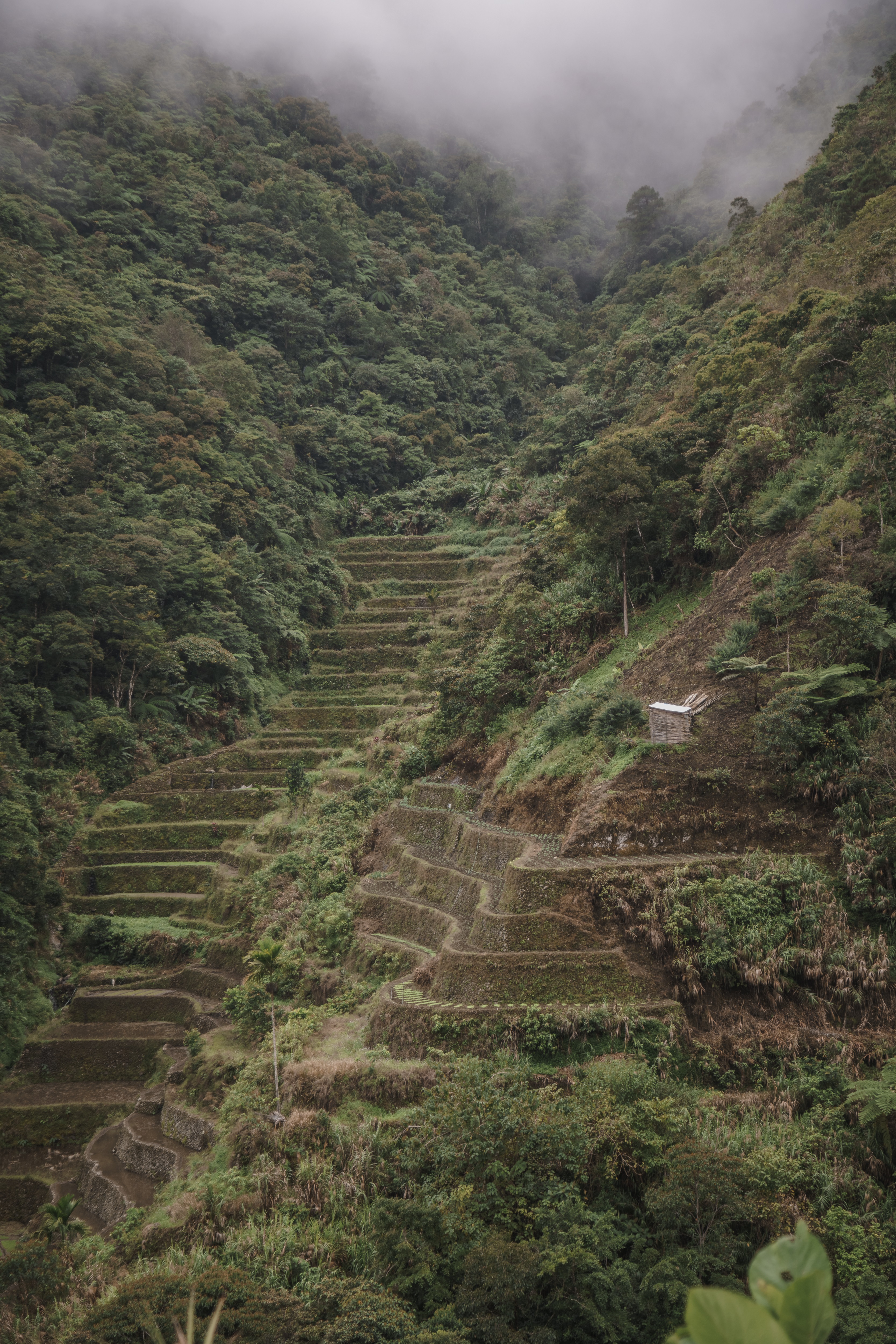In the Philippines, the Banaue Rice Terraces is seen to be a cultural gem and a testament of the ancestral, indigenous people’s architectural and agricultural genius. Believed to be carved by hand with minimal equipment into the mountains of Ifugao, it is approximated to be 5,000 feet above sea level and is fed by an ancient irrigation system from the rainforests above the terraces. This wonder of architecture was once deemed to be one of the Eight Wonders of the World and a World Heritage Site by the United Nations Educational, Scientific and Cultural Organization (UNESCO); but unfortunately, not anymore.
Fast forward to today, local Ifugao farmers continue to use the irrigation system developed thousands of years ago, usually using the crops for trade or for personal consumption. Another primary source of income for them is the local tourism industry, with travellers from all corners of the globe flocking the northern province of Ifugao.
However, recent developments in tourism made way for commercial establishments to be built around the proximity of the rice terraces. Younger generations of the indigenous people turned to the lucrative tourism industry, resulting to countless little buildings flocking the site of the terraces from a viewpoint, unlike the barely commercialized and well-maintained Batad Rice Terraces.
From El Niño-induced drought ravages and the gradual erosion of the iconic “steps” that constantly need inspection and care, such misfortunes took its toll on the terraces. Fortunately, as of April 2017, the Department of Agriculture has indicated a funding of one million pesos for the development and rehabilitation of the Banaue Rice Terraces. Aside from the rehabilitation efforts for the heritage site, the project also aims to introduce livelihood projects such as backyard dairy production for the involved families in the rice terraces.
But in a series of interviews with The Benildean, Banaue locals indicated they are yet to feel the promises of the government and instead took matters into their own hands in an effort to conserve their ancestors’ legacy for generations to come.
Melo Chorhangon, Tour Guide
“Bilang isang katutubong Ifugao ay responsibilidad naming gabayan ang mga turista sa kanilang pagdaan dito sa palayan namin. Ginagawa lang din naman namin ito hindi lang para sa aming kanya-kanyang pamilya kundi para [rin] mapanatiling malinis ang inihandog ng mga ninuno namin sa amin. Wala [rin] namang ibang makakatulong sa amin kundi kami-kami [rin] naman.”
Margie Poligon, Souvenir shop proprietor
“Naisip namin na bilang isang paraan para mapanatili ang aming rice terraces ay ihandog namin ang mga produktong tatak Ifugao sa mga dayuhan dito sa aming probinsya. Dasal lang namin na sana maintindihan nila na buhay namin ang mga terraces na ito at sana bigyan ng tamang paggalang tulad ng mabuting pakikitungo na ibinibigay namin sa kanila.”
Noel Balenga, Native
“Lalo na kaming hindi nakapag-aral, kami ang nag-continue mag-maintain ng terraces. Hindi naman kasi lahat kami natutulungan [ng gobyerno] dito upang mapanatilihang malinis ang aming anihan. Mas maganda kung lahat nagtutulungan kasi hindi lang naman ito para sa aming mga Ifugao lang, pero para sa lahat ng mamamayang Pilipino.”
Pinky Comicho, Native shop owner
“Kapag hindi namin mapanatili ang inihandog ng mga ninuno namin sa aming mga Ifugao mula sa makabagong henerasyon ay tiyak na ito ay isang pagbigo sa kanilang dugo’t pawis na inilaan sa pagtayo ng mga rice terraces dito.”
Meanwhile, the idea of preservation also extends to the people of Sagada, which is located just a few hours from Banaue. The effects of modernization have seemingly affected their daily living as well. Beyond the physical representation of a people’s legacy, it is also crucial to uphold traditions and cultures.
Marc Kiethley Aranduque, Sagada weaving shop proprietor
“Para sa akin, mas maganda ma-preserve natin ang ganito [weaving] kasi it is who we are and where we started. Dito kami nagsimula and we want it to stay that way. Hopefully maintindihan ng mga kabataan na mahalin ang pinanggalingan.”
Lester Abuen, Ganduyan Museum owner and curator
“What’s ours is ours and it is our responsibility to protect what is entrusted to us by our elders. We are a developing community and we are quite happy to do this for ourselves. We don’t want our treasures to be taken from us. We feel much safer this way.”
Photo by Sace Natividad
This article was originally published in The Benildean Vol. 4 No. 2: Preservation.


